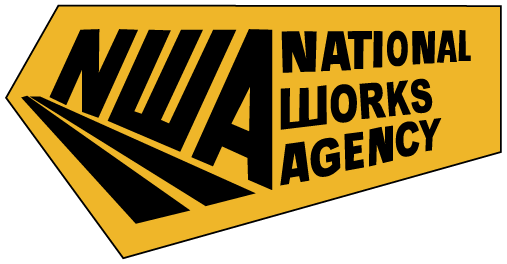With safety and ease of access being major concerns of the National Works Agency (NWA), keeping up with industry advancements, aimed at improving these deliverables is a key part of the strategy to fulfil its mandate.
To many, the installation of Asphaltic Concrete surface is the ultimate as it facilitates easier movements and certainly save on costs, especially as it relates to vehicle maintenance. Though treated in the main as the final step, the putting down of the final surface is really part of the preliminary stage in the construction of a safe and functional road surface. To complete a road surface for practical purposes, lines to delineate directional movement, as well as signs and symbols to assist with flow should be done.
Road markings become worn and faded, over time, as a result of heavy volumes of traffic. To reduce the likelihood of fading the switch from high volume traffic marking paint to heated thermoplastic, which is more durable, has become standard industry practice.
Thermoplastic works perfectly for road marking operations but can be costly, time consuming and cumbersome. This, as the application requires large amounts of material and tools and is labor intensive, not to mention the time and effort required to clean the tools for the next application.
Ennis-Flint to the rescue!
A traffic safety solutions company, Ennis-Flint, has developed what it describes as a revolutionary method in the application of thermoplastic to asphaltic concrete pavements.
The company as part of its marketing efforts demonstrated the usefulness of its product recently at the NWA’s Corporate Office in Kingston. As part of its demonstration, one of the two areas designated for disabled parking was redone. An arrow was also placed in the Half Way Tree area.
This new method was demonstrated at the Corporate Office of the NWA on June 8, 2016 with the installation of a disabled parking feature bringing the space allotted for disabled parking to two. A straight directional arrow was also installed in the Half-Way-Tree area adjacent to the Rainforest Seafood Restaurant on Constant Spring Road.
Regional Sales Manager for Central America and the Caribbean at Ennis-Flint, Cristian Arevalo carried out the demonstration which saw members of the Planning and Research team headed by Director Patrick Rose participating.
The method of application involves a pre-fabricated reflective glass beaded thermoplastic template of the required feature being placed in the desired position and then heated with a light weight hand held heat gun to activate the bitumen in the asphalt and the template which creates an attachment between the two resulting in a permanent bond.



